They may never sling the weights, but brothers Al and Danny Kavadlo certainly keep plenty of proverbial irons in the fire. Aside from perpetually traveling the world teaching workshops and certifications, the two calisthenics experts have contributed dozens of articles to both Bodybuilding.com and our sister publication Train Magazine, and are always working to expand their collective corner of the bookshelf.
After a number of individual bylines on everything from the essentials of bar training, to personal training, to earning your diamond-cut abs, the two collaborated for the first time last year on the book Street Workout. While this photo-packed paperback contained numerous individual workouts, the one thing it didn't offer was a full, start-to-finish, multi-phased program.
If that's what you've been waiting for, wait no more. The Kavadlo's second dual byline, Get Strong: The Ultimate 16-Week Transformation Program for Gaining Muscle and Strength Using the Power of Progressive Calisthenics, was recently released, and the brothers let us in on their vision of a stronger world.
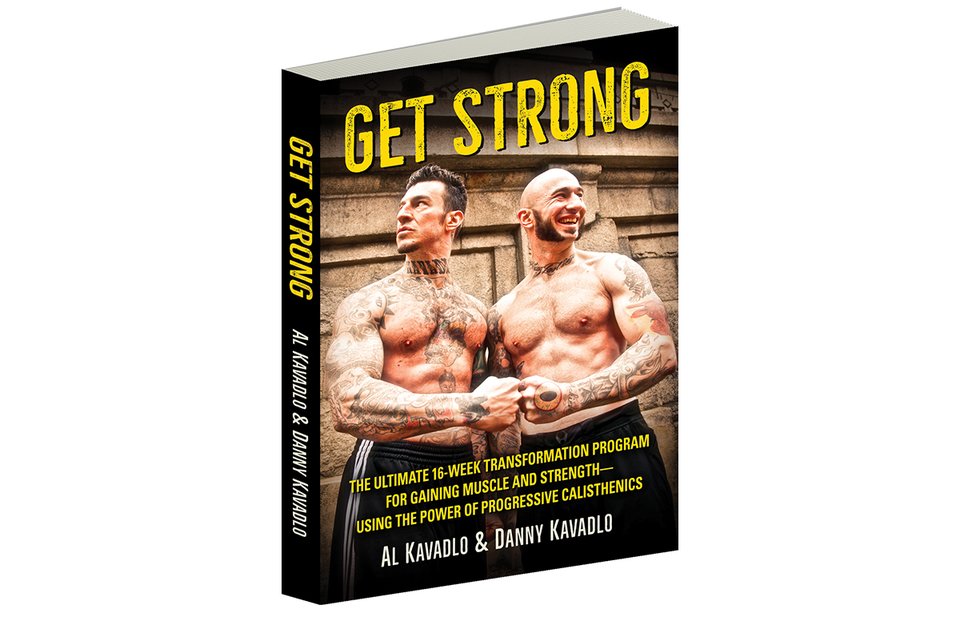
Your Previous Books Provide Workouts Galore, But Not A "Program" Per Se. Why Go That Way Now?
Danny: For the last several years, Al and I have had the unique experience of traveling the world teaching calisthenics to hundreds of trainers across dozens of countries. The one universal question that everyone kept asking was, "Can you give us an exact program for building muscle and strength with calisthenics?" We like to give the people what they want, so we created Get Strong, the first Kavadlo Brothers book to feature a detailed program with specific exercise sequences, precise set and rep ranges, warm-ups, and rest days. You asked for it—you got it!
Al: It's true—our other books all contain exercise progressions, workout templates, and various assessment charts, but this one leaves no room for guesswork or interpretation. Everything in Get Strong is spelled out to the letter.
12 Weeks, 18 Weeks, 4 Weeks, 7 Days…We've Seen Them All. What Do You Like About The 16-Week Time Frame?
Al: Fitness is a lifelong pursuit, but it's often helpful to break our training timeline down into smaller pieces in order to make it more digestible. We felt like 16 weeks was enough time for anyone who sticks with the program to make significant progress, but that it also wasn't too overwhelming of a commitment for beginners or people who have had some time away from training.
Danny: Even within that larger 16-week cycle, there are smaller four-week phases throughout Get Strong to make sure that you are progressing properly. Each phase has a test that you'll need to pass before advancing. A lot of us require this type of structure in order to stay on track.
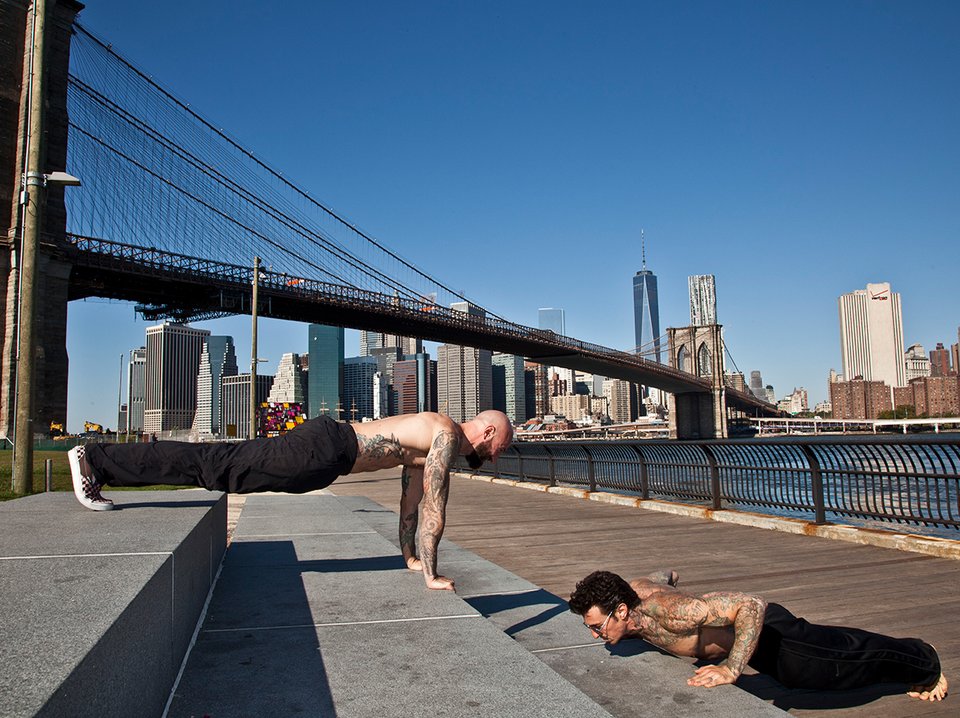
Someone Focused On 1RM Strength May Scoff At The Title "Get Strong." How Do You Guys Define Strength, And What Types Of Strength Will This Program Build?
Danny: Strength means different things to different people. To me, calisthenics is the purest form of strength because it puts all individuals on a level playing field. In other words, a muscular fellow who's 6 feet 2 inches tall and weighs 230 pounds will naturally have a higher one rep max on a bench press than an equally muscled individual of 5 feet 6 inches and 150 pounds. It's simply a matter of physics; the heavier guy can lift more external weight.
But, if you put them in a push-up contest, things even out. Because bodyweight strength training focuses on the practitioners' pound-for-pound strength, we all have the same relative resistance: ourselves.
Al: The argument essentially boils down to one question: Is true strength the ability to lift a heavy external object, or the ability to effectively move one's own body? There's no universally accepted answer and, to be fair, a good argument exists on both sides. In my observations, however, people who train exclusively with their own body weight for resistance tend to perform fairly well when faced with the task of lifting an external load, as compared to how those who only lift do when faced with the task of moving their own body weight.
Basically, a calisthenics practitioner who has never used weights will probably be able to lift a fair amount on their initial attempts, but even accomplished lifters often struggle with things like pull-ups and unweighted one-legged squats.
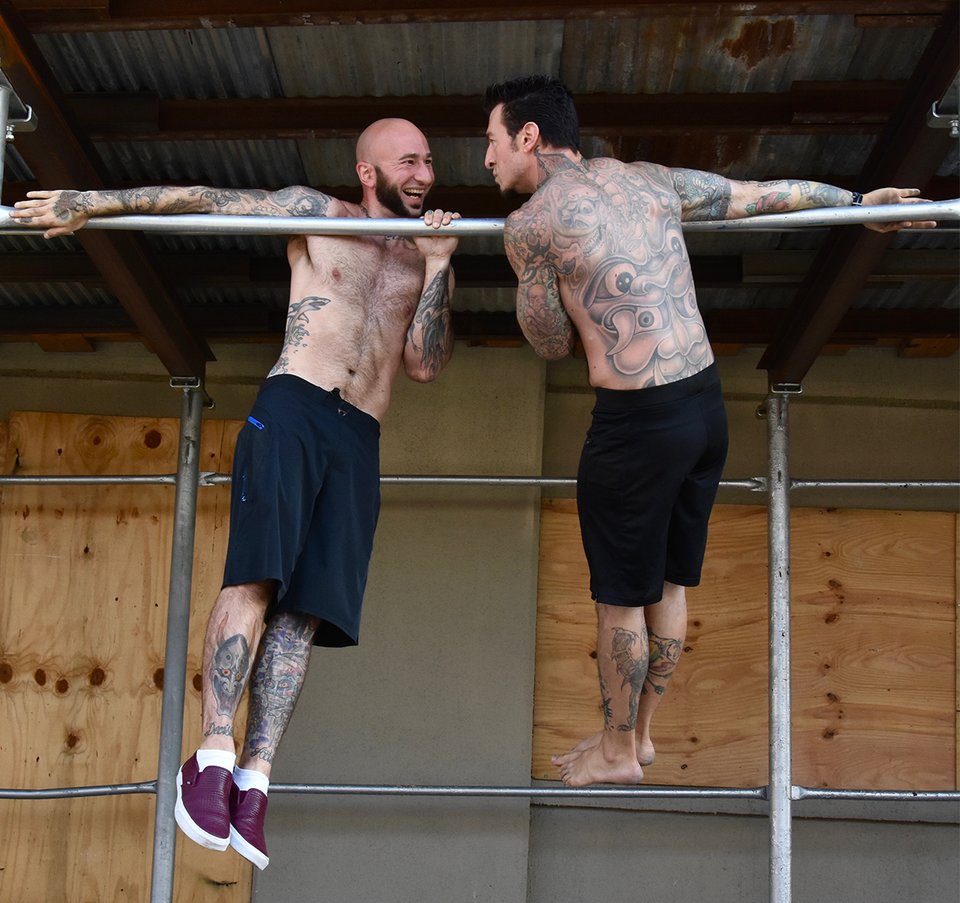
If People Have Been Asking You For This, Then Clearly Strength Is Something They're Seeking—And Not Achieving To Their Satisfaction. What Do You Find Most Holds People Back From Their Strength Potential?
Al: Themselves! I've been a personal trainer for a long time, and the number one thing that my clients all have in common is the need for accountability. Not everyone loves to train as much as Danny and I do so it can be helpful for people to have something to answer to outside of themselves.
Danny: It's funny how people often have no problem letting themselves down, but they don't want to let down their trainer! This book is the next best thing to having me or Al as your own personal trainer.
You Guys Work With Everyone From Beginners To Flag-Waiving Freaks. How Can This Program Appeal To Both? Is It Scalable Up Or Down If Someone Still Wants To Work On Their Lever, Flag, Or One-Armed Push-Up?
Al: For the beginner, the first phase of the program will be essential for building a proper foundation. However, we encourage more seasoned trainees to jump in at Phase Two, or even Phase Three, if they can pass the prerequisites. These tests are purposefully placed to assess when to continue, and even where to begin.
Danny: In addition to the main program, Get Strong, there's also a section called Stay Strong, which includes supplemental exercises, bonus workouts, and even partner drills to keep people challenged for way beyond 16 weeks. Flags and front levers are all included. Get Strong has something for everyone!
What Does It Offer To The Bodyweight-Curious, Iron-Accustomed Warrior?
Al: As I was saying earlier, sometimes people who are capable of moving impressive poundage in the weight room still get humbled by bodyweight exercises. That's why this is the perfect program for anyone who's transitioning to calisthenics from a weight training background. In calisthenics, you can't alter the resistance by adding or removing plates from a barbell. Instead, we start by building a solid foundation in basics movements, then progress to more advanced variations of those exercises.
Danny: Instead of increasing the load, we instead change the leverage. This can be a tricky concept to grasp for people who are used to simply adding more weight to the same lift. Depending on the exercise, changing the leverage could mean increasing the range of motion,
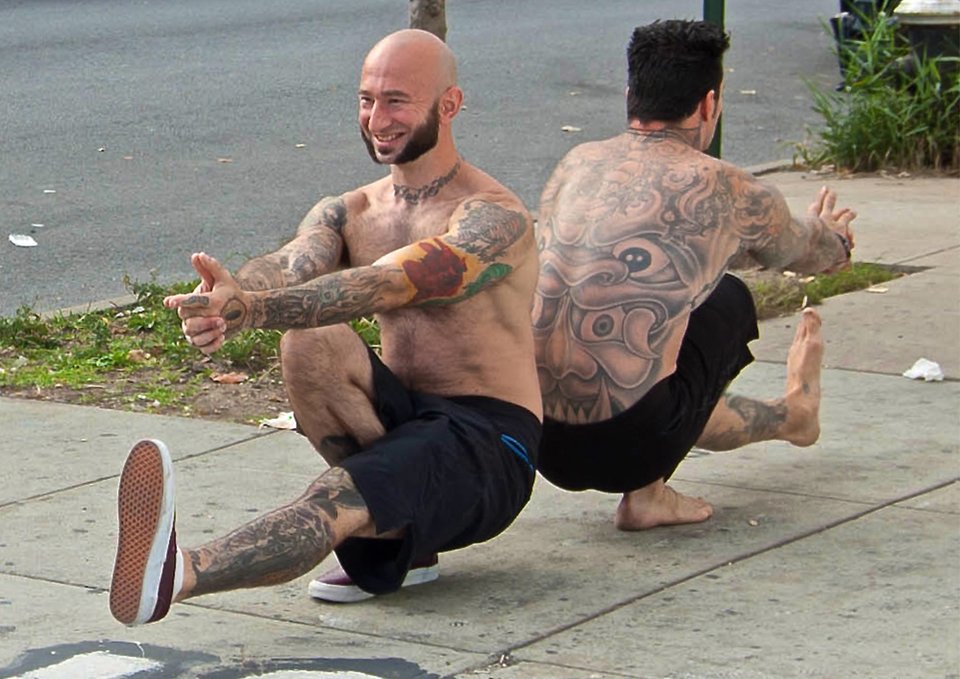
What Are The Deets? What Equipment Do I Need? How Much Time?
Al: The program starts with three training days per week, then adds a fourth day in halfway through. The workouts shouldn't require more than 50 minutes, and the only equipment needed is a floor, a wall, a bench or step, and a bar or other sturdy object that you can hang from.
Danny: The idea was to make the program as accessible as possible for everyone. There are a lot of overly complicated fitness systems out there, but "complicated" does not translate to "better." In fact, the opposite is often true. We wanted to strip things down to the bare essentials.
Some Of This Program Is Full-Body, And Some Is—Gasp!—A Split Of Sorts. What Place Does A Split Have In Bodyweight Training? And Can You Give Us One Example Of What A Workout From That Phase Looks Like?
Al: The split that we employ during the second half of the program is a simple upper/lower split. As with other forms of strength training, the purpose of the split routine is to allow for more total training volume per body part without increasing the total time of each individual training session. It also allows for additional recovery time, as you will be training each body part twice per week instead of three times.
Danny: None of the workouts in this book take two hours, but by the time you progress to the split routine part of the program, the workouts do get intense! By week nine of the program, you'll be doing chin-ups, pull-ups, handstand holds, single-leg squat progressions, and more. By the time you've reached the end of the program, your pound-for-pound strength will have soared to new levels. So what are you waiting for? Let's Get Strong!
Click Here For More Articles

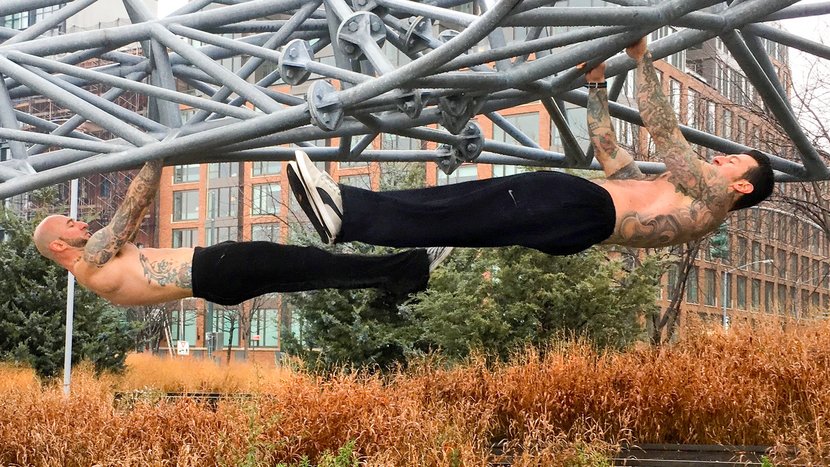

No comments:
Post a Comment